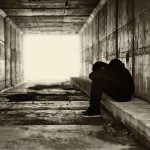The term, “anxiety disorder” is actually a blanket description for several different, but related, types of mental illnesses that are characterized by unusually strong fear and anxiety. These illnesses include generalized anxiety disorder, panic disorder, phobias, obsessive-compulsive disorders, post-traumatic stress disorder, and separation anxiety disorder. Roughly 40 million people have an anxiety disorder in the United States, and the disorder usually manifests by the age of 22. People with anxiety disorders frequently suffer from depression as well.
Generalized Anxiety Disorder
Generalized anxiety disorder (GAD) is the most common form of anxiety disorder among adults. It is marked by persistent worry and anxiety about everyday things. In some people, GAD is fairly mild and does not interfere with daily living. In others the condition can be severe and interfere with work, school and family and social responsibilities. Nearly 7 million people suffer from GAD. To review a list of symptoms, click here.
Panic Disorder
The general day-to-day symptoms of panic disorder may be quite similar to generalized anxiety disorder. People with a panic disorder also experience something called panic attacks, which involve an attack that can be momentary or last for several minutes where a person is overwhelmed with terror. People with a panic disorder may experience repeated panic attacks when there is no reason to feel terrified. They also often change their regular daily activities to avoid stressors and the possibility of another panic attack. About 6 million people are diagnosed with a panic disorder, and nearly one third of them will go on to develop agoraphobia, a type of phobia explained below.
Phobias
Phobias are irrational or semi-irrational fears, such as an overwhelming terror about heights or being in enclosed spaces. They share similar symptoms to generalized anxiety disorder and panic disorder. There are two specific sub-types of phobias, they are agoraphobia and social anxiety disorder:
Agoraphobia
Agoraphobia, specifically, is the fear of not having an escape from embarrassing or emotionally difficult situations, often involving other people. People with agoraphobia often have panic attacks, and it is closely related to panic disorder. In extreme cases, people with agoraphobia can become so afraid of the tasks of daily living, such as driving or going to the grocery store or work, that they may have difficulty leaving the house. Nearly 2 million American adults are diagnosed with agoraphobia.
Social Anxiety Disorder
Similar to those with agoraphobia, people with social anxiety disorder have overly fearful responses to interactions with other people. Sometimes the phobia is specific to speaking in groups or in public speaking, while at other times the anxiety occurs whenever a person has to interact with others. People with social anxiety disorder may experience the same symptoms of panic disorder when having to deal with other people, and as a result may might end up socially isolated. Social phobias are one of the most common anxiety disorders, with up to 15 million people in the United States suffering from this condition. It often begins in childhood.
Obsessive Compulsive Disorder
People with obsessive-compulsive disorder (OCD) have both repetitive obsessions (about doing particular activities, being in certain situations or having intrusive thoughts) accompanied by ritualized compulsive behavior in reaction to those obsessions (such as washing hands, cleaning house, and checking locks). Sometimes the compulsive behavior is triggered by nothing other than feeling nervous. If someone is unable to complete his or her compulsive behavior, the resulting anxiety can be extreme and may be similar to panic disorder. Just over 2 million Americans are estimated to be struggling with OCD. It frequently manifests during childhood or adolescence.
Post Traumatic Stress Disorder
People with post traumatic stress disorder, also known as PTSD, typically have recurring feelings of panic that is are initially caused by an extremely stressful situation, such as combat or physical assault, and later triggered by other situations, such as a loud noise. People with PTSD often also have depression. PTSD can also be caused by long long-term exposure to repeated and extremely stressful events. Nearly 8 million people in the United States have PTSD, and the percentage of soldiers returning from combat zones with the condition can be as high as 20 percent.
Separation Anxiety Disorder
People with separation anxiety disorder have an unusually extreme emotional reaction to being separated from a person or place. Symptoms of these reactions are similar to panic attacks.
Last Reviewed: June 14, 2010








